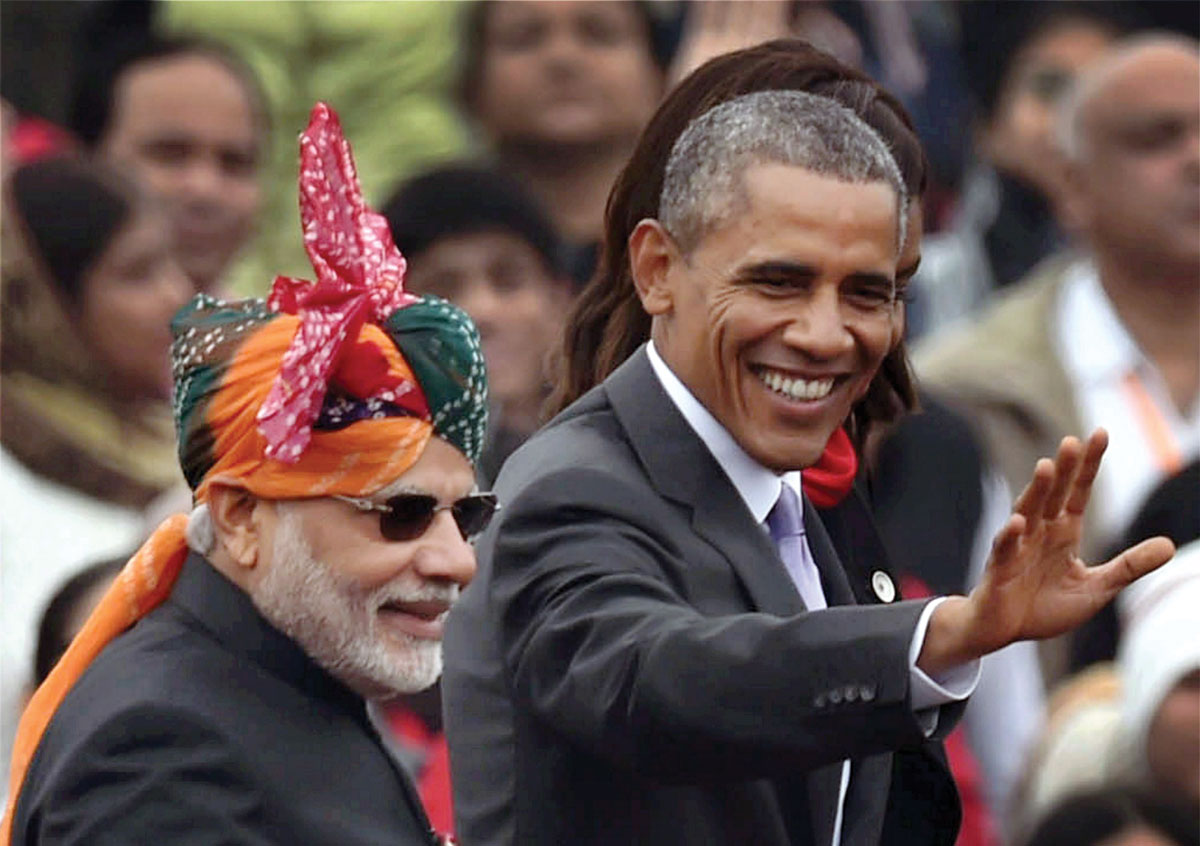2015: A TRANSFORMATIVE YEAR
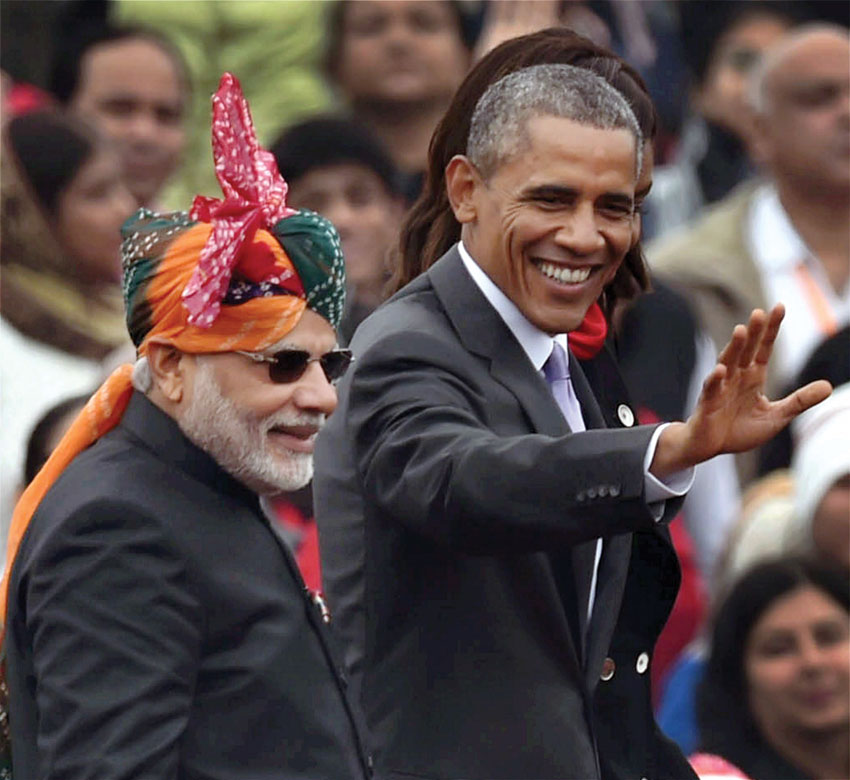
In the annals of Indo-U.S. ties, 2015 would be remembered as a transformative year that sets the tone for a new dimension of active engagements at top leadership level, and a growing defense partnership that is set to become an anchor of global security, writes Lalit K. Jha. (#Politics, #CurrentAffairs, #Siliconeer, @Siliconeer, #narendramodi, @narendramodi, #IndianEmbassyUSA, #IndiaUSRelations)
The year started with a historic India visit of President Barack Obama where he attended India’s Republic Day Parade in New Delhi on Jan. 26. He not only became the first American president to attend the Indian parade, but also the first U.S. President to visit India twice.
Dismissing the security concerns of the secret service, Obama sat in an open arena for three hours watching the parade that gave him a glimpse of India’s cultural diversity and its military might. His visit also resulted in resolving the contentious pending issues in the civil nuclear deal.
President Obama and Prime Minister Narendra Modi decided to establish a hotline between them and launch a Strategic and Commercial Dialog and renew India-U.S. Defense Partnership agreement; thus giving a new dimension to this strategic bilateral ties at a time when China is flexing its muscle in disputed South China Sea.
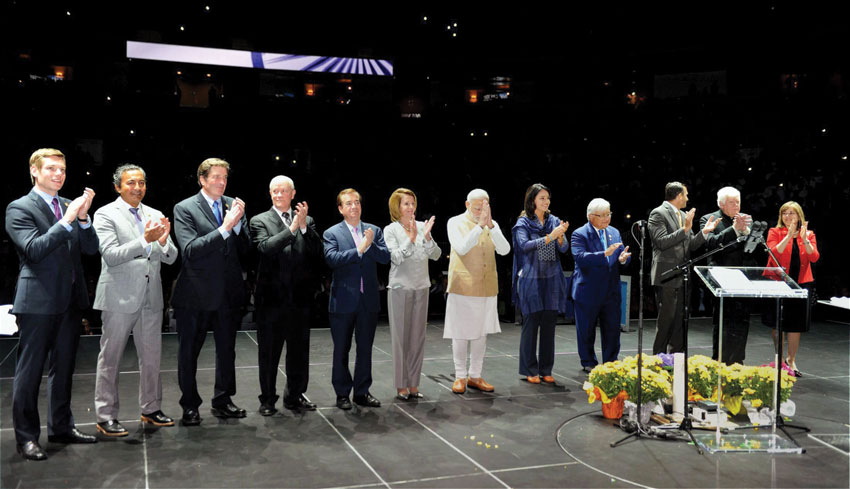
The results were visible by the time when curtains came down on 2015. Obama and Modi had met thrice during the year. The two subsequent meetings were in New York on the sidelines of the UN General Assembly and one in Paris on the sidelines of the Climate Change summit.
Obama and Modi started talking frequently over the hotline, after it was established this summer. The U.S. President has hotline or a secure line of communication only for a few world leaders.
U.S. Ambassador to India Richard Verma said that during the recently concluded climate negotiations in Paris, President Obama and Prime Minister Modi talked regularly on new secure communications lines to find common ground and develop ways to proceed in reaching an agreement.
“What we are witnessing in the U.S.-India partnership is the culmination of years of effort actually decades of hard work that has yielded important results for both nations. This past year, in particular, was especially transformative,” he said.
Last fall India and the U.S. launched the first-ever Strategic and Commercial Dialog, bringing a whole-of-government approach.
Currently there are 30+ working groups and government-to-government dialogs between the two sides that have been established on everything from space cooperation, cyber security, global health security and civil aviation.
In December, Manohar Parrikar became the first Indian defense minister to visit the Pacific Command headquarters in Hawaii and was given a rare insight of a nuclear-powered aircraft carrier.
U.S. Defense Secretary Ashton Carter himself accompanied Parrikar to America’s top nuclear powered aircraft carrier USS Eisenhower and gave his Indian counterpart a ride on his personal plane. At the end of the day, the two leaders spent nine hours together at a stretch.
Carter, who had visited India this summer to sign and renew the India-U.S. Defense Partnership agreement for another 10 years, said the defense partnership between the United States and India will become “an anchor of global security.”
Being described as a milestone, the Defense Trade and Technology Initiative has gained its own momentum as the two sides have started talking for co-operation in the field of jet engine and aircraft carriers in addition to co-development and co-production of a number of hi-tech military hardware.
Bilateral defense trade this year crossed $14 billion.
“Our cooperation became more regular, even routine, which had the effect not only of building a certain durability and resiliency in our relationship that is critical to moving to the next level, but also in resolving disputes,” Verma says.
Agrees his Indian counterpart. “Today, it is natural for India and the U.S. to consult regularly on all major policy issues of the day – be it security of the global commons, reform of the international economic and financial architecture or creation of an open, balanced and inclusive architecture in Asia-Pacific and the Indian Ocean Region,” Indian Ambassador to the U.S. Arun K. Singh says.
“Our countries have taken their global partnership to third countries where our expertise and resources are valued,” Singh observes. India and the U.S. signed on to a common vision for the security of the Asia-Pacific.
Bilateral trade between India and the US is now around $100 billion – rising five-fold in the last decade.
Obama and Modi have set a goal of taking it to $500 billion in the next few years. While sharp differences between the two nations remain on some of the key trade related issues including agriculture, pharmaceutical sector, intellectual property and H-1B visas, unlike in the previous years it did not spill out in the open or threatened to challenge the bilateral relationship.
Officials of the two countries now talk on a regular basis and have been brainstorming on how to amicably address those differences. “We have put in place the structures to tackle those issues that not only unite us, but we can engage on those issues that might divide us as well. This is the hallmark of a mature and lasting friendship,” Verma said.
The new bonhomie in India-U.S. ties is also reflected in the people-to-people relationship as a record number of Indian tourists came to the U.S. By the end of the year some 180,000 Indian students were studying in various American universities. Between July and November alone more than 50,000 Indian students came to the U.S. for higher studies.
For the first time in several decades, Modi became the first Indian Prime Minister to visit the Silicon Valley to meet and interact with the leadership of American tech industry and address the large Indian diaspora there. India also held a Regional Pravasi Bharatiya Divas in Los Angeles in November.
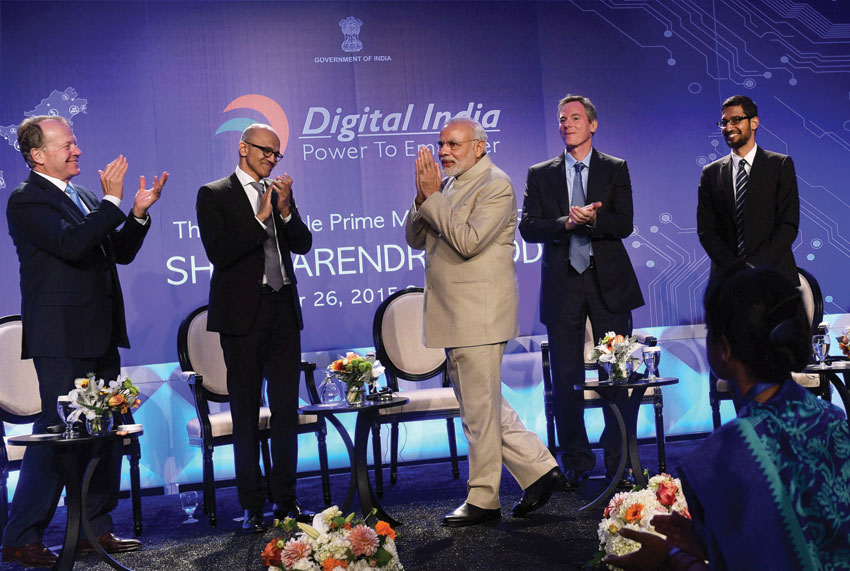
Modi’s visit has resulted in a sudden spur in CEOs of top U.S. IT companies, #Microsoft, #Google and #Facebook, travelling to India in the last two months.
The year also witnessed a spate of shooting incidents across the U.S. and attacks on members of the Sikh community.
Fourteen people were killed early last month when a heavily armed young Pakistani American couple opened indiscriminate fire during a Christmas party at a center for people with disabilities in California, the deadliest shooting in the U.S. since the Sandy Hook school massacre in 2012.
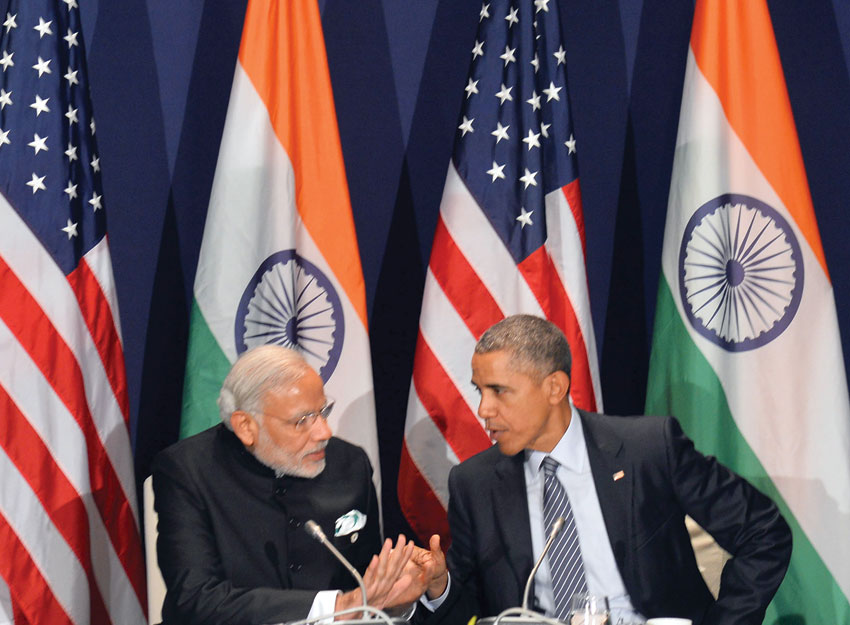
In September, a Sikh-American was viciously assaulted in a suburb outside of Chicago after being called “Bin Laden.”
The American-Sikh community, numbering nearly half-a-million, has seen a spur in hate crimes against them after the California shooting.
A Sikh temple in California was vandalized and a group of Sikh men were harassed by security staff and denied access to a stadium in San Diego, Calif., for an American football game because they were wearing turbans.
Sikh Americans have long been the target of racially motivated violence and discrimination in the United States, especially after the 9/11 terror attacks.
The year ends with a bitter political campaign with both Republican and Democrat presidential aspirants launching direct attacks on each other. Leading Democratic presidential aspirant Hillary Clinton slammed Donald Trump’s recent comments about banning Muslim immigrants, saying the Republican front-runner was “becoming ISIS’s best recruiter.”
Republican National Committee chairman Reince Priebus alleged that Clinton once again proved inconsistent on the issues and out-of-touch with the American people. The presidential election is scheduled for November 2016.
